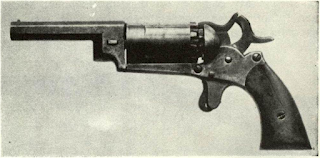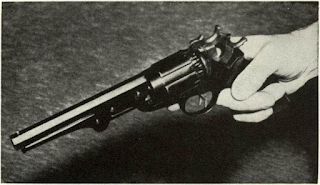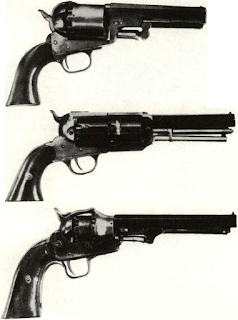The revolvers of John Walch of New York City require more than passing mention. He felt a man could
Walch cured the problem of being undergunned by
Walch’s first design used a single trigger to fire;
The lieutenant’s enthusiasm was not shared by
Walch cured the problem of being undergunned by
Walch’s first design used a single trigger to fire;
 |
| Single trigger improvement of lohn P. Lindsay was employed on small Walch five-chambered ten-shooter, cal. .31. |
The lieutenant’s enthusiasm was not shared by


Comments
Post a Comment